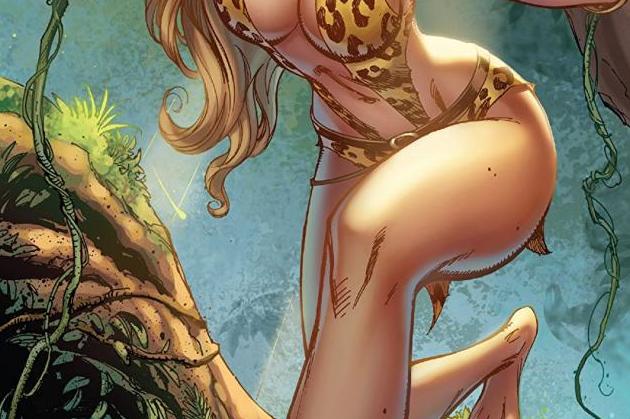Sheena Queen of the Jungle #1
Written by: Marguerite Bennett and Christina Trujillo
Art by: Moritat and Dimi Macheras
Color by: Moritat and Casey Silver
Published by: Dynamite Comics
With Sheena Queen of the Jungle, Dynamite Comics continue its new tradition of bringing back long ago pulp heroes and heroines to a modern-day audience. In Sheena, we are quickly introduced to the fact that this is set in the modern day as Sheena strikes down a flying drone with her spear, calling it a flying turtle. She conveys to the reader that Cowodi (intruders in her language) are growing bolder and continue to infringe on her tribe's territory within the jungle.
Coupled with these drones that she keeps shooting down, the action begins when she hears a cry come from her village which is currently being overrun by a private military organization, with itchy trigger fingers, are looking for a surveyor, sent by the company that hired them, who passed by this jungle and disappeared.
The plot is somewhat familiar, especially if you have read pulp novels or comics in the past. However I have to commend Bennett and Trujillo for adding some depth to the story. Sheena does not come off perfect in this comic, especially when she confronts the private military in her village. Though they are shown to have itchy trigger fingers, they are not the ones to initiate the violence, it’s Sheena. It’s a small point in the comic, but it is appreciated to differentiate from some of the classic stories where the hero has to resort to violence and usually is not the one to initiate it.
Otherwise, the plot advances as you would expect, but does leave some breadcrumbs that will surely be explored in future issues - such as why is that University student flying drones in the jungle.
On art, we get the fantastic Moritat, who is just built for this type of series. I was first introduced to his art back in the early 2010s when he was drawing The Spirit for DC, and ever since I will sometimes pick up a comic strictly because of him. This is no different. His use of a messier style (I don’t know how else to describe it) and very expressive characters help the reader feel what is being experienced by the characters. It’s almost a shame that he isn’t also the cover artist, though J. Scott Campbell is no slouch either when it comes to Pin-up style covers.





